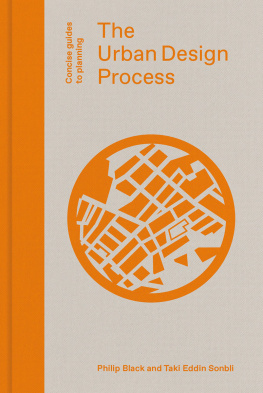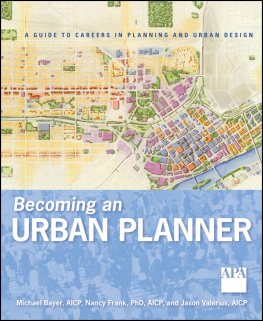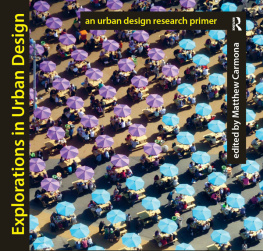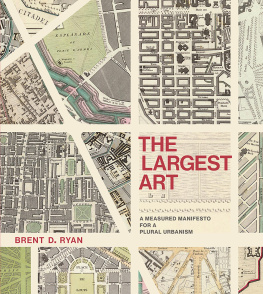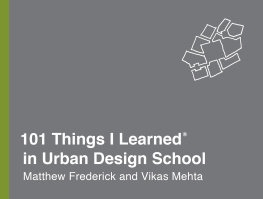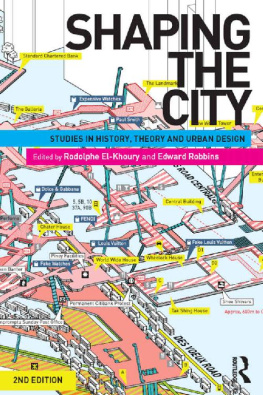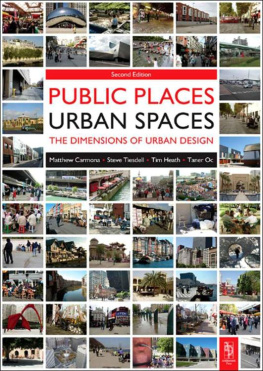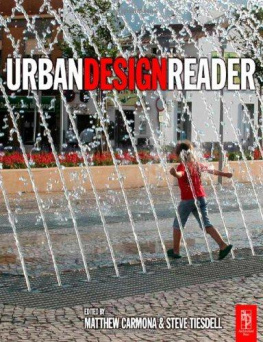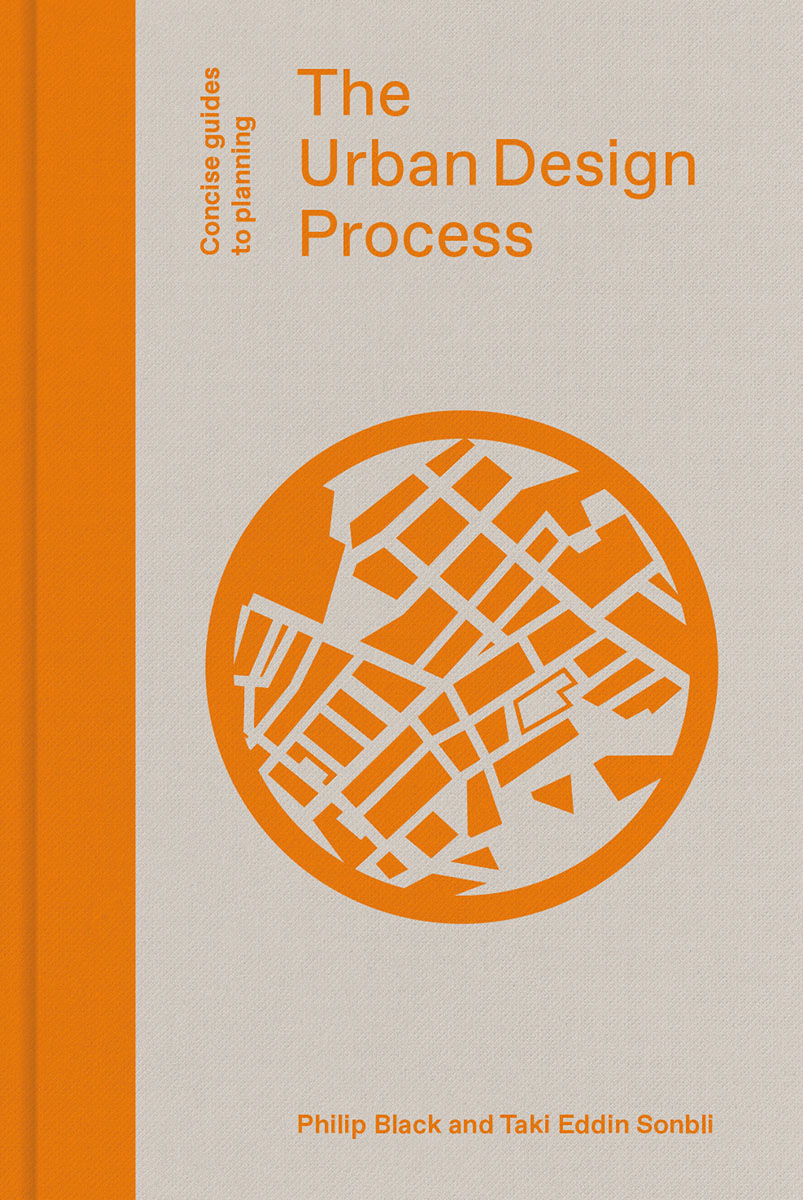

First published in 2019 by Lund Humphries
Lund Humphries
Office 3, Book House
261A City Road
London EC1V 1JX
UK
www.lundhumphries.com
The Urban Design Process
Philip Black and Taki Eddin Sonbli, 2019
All rights reserved
ISBN (hardback): 9781848222885
ISBN (eBook PDF): 9781848222892
ISBN (eBook ePub): 9781848223042
ISBN (eBook Mobi): 9781848223059
Concise Guides to Planning (Print): ISSN 25168177
Concise Guides to Planning (Online): ISSN 25168185
A Cataloguing-in-Publication record for this book is available from the British Library.
All rights reserved. No part of this publication may be reproduced, stored in a retrieval system or transmitted in any form or by any means, electrical, mechanical or otherwise, without first seeking the permission of the copyright owners and publishers. Every effort has been made to seek permission to reproduce the images in this book. Any omissions are entirely unintentional, and details should be addressed to the publishers.
Philip Black and Taki Eddin Sonbli have asserted their right under the Copyright, Designs and Patent Act, 1988, to be identified as the Authors of this Work.
Cover illustration by Stefi Orazi, Philip Black and Taki Sonbli
Copy edited by Pamela Bertram
Typeset by Jacqui Cornish
Set in Favorit
Image credits:
All figures and tables are from the authors own sources, with the exception of , Mervyn Black.
Contents
Foreword
This book provides an incredibly rich set of insights into how to generate good urban design. It helps guide the reader through the various stages that designers need to engage with in taking a project from initial ideas through to worked-up proposals. Reading it helped me to appreciate the process in a way that no other previous book had. By taking us through the process in a clear and logical way, using a worked-up example, it slowly reveals the various ways of thinking about the consideration needed to produce good design.
The use of a worked-up case study is revealing in so many ways yes, it is a site in a particular city, but the way we are guided through the example brings to life how the same techniques might be applied elsewhere. The use of examples from around the world add richness and fresh insights, while the authors notes usefully guide us to further reading, for those wanting to takes their interest even further.
This book is a must, and not just for would-be urban designers it is going to be invaluable for all developers, architects, planners and members of the public who want to be able to engage with urban designers in order to create better places, whether commissioning masterplans or as future users of a planned development.
Graham Haughton, Series Editor
Preface
Urban design is not easily defined as a field or discipline. It is an arena which many professionals, thinkers, and other stakeholders of the built environment, lay some claim to as they consider the design of cities and place. We argue that urban design must not only be a frame of mind, but also a specific, applied, and technical vocation. It is important that urban design continues to act as a field for research and theorising on place-making, but it must also aid the production of quality sustainable places.
It was from this premise that we developed The Urban Design Process. An applied technical framework for the production of contextually responsive design in cities that is compatible with theoretical approaches to the urban condition. This process has been developed through our teaching and research at the University of Manchester, UK. We are advocates for a studio-based technical approach utilising traditional design skills across multiple scales. A commitment to pedagogical development and working closely with urban design practitioners has allowed the process to undergo extensive testing and evolve into its current format. The urban design process, presented in this book, is not linear in structure, but rather, flexible and multi-disciplinary. It allows users to engage effectively with local context and ensure appropriate design solutions are rationalised, transparent and equitable.
concludes with a call for urban design to remain at the forefront of city development and for urban designers to engage more with people and place to produce better, more liveable environments.
The process is not a silver bullet for place-making it still requires motivated and skilful designers to engage with it fully and be committed to delivering quality places for people. A book cannot fully explore the intricacies of place analysis, in particular within the gamut of different contexts and challenging settings it can only provide a framework for practice. It is incumbent on designers to build a comprehensive knowledge and experience. To aid in this personal development we have provided Extra look sections (pointing towards international examples to explore); Extra info sections (providing suggested readings); and Note from authors sections (reminding the reader at key points of the need for flexibility and constant reflection throughout the Urban Design Process).
Acknowledgements
We are grateful to the University of Manchester for their support in producing this title. We would also like to express our thanks to the students from the MSc Urban Design programme their commitment to learning about urban design inspires us and has helped us refine and detail the Urban Design Process we present in this book.
We would also like to convey our gratitude to Lund Humphries, in particular Val Rose, Jacqui Cornish, and Pamela Bertram for their roles in making this book possible and helping shape the final layout. Also to Professor Graham Haughton, the Series Editor, for his regular advice and trust in us to produce this title.
Philip would like to thank Emma, Mya, and Cora for their patience and encouragement during the development of the book. Also thanks to my parents for their endless support in all things.
Taki would like to thank Jouliana, Hassan, Ryan, and his parents. Sorry for the late nights during the completion of this project.
Finally, we reserve special thanks for Bob Phillips, our colleague, collaborator, and great friend. Bob has been a key factor in developing the process presented here, his knowledge, experience, and enthusiasm are irreplaceable. The Urban Design Process belongs as much to him as it does us.
Section I Introduction to Urban Design

Urban design
Urban design is a complex yet critical field, it is an arena with a multitude of territories it can act within, providing flexibility in how it is defined and practised in the built environment. Yet these many territories also make urban design a contested field that lacks a clear mandate, consolidated theory, or domain. It is vulnerable to the effects of contemporary discourses such as globalisation, urban branding, and notions of the generic city. The consequence of these issues is that urban design has shifted somewhat from one of the primary reasons it evolved from the Harvard Conference in 1956 to provide a more considered, contextually responsive approach to designing places. A conflict has arisen in modern city development between makers, regulators, and users in terms of who, or what, is being represented and how this might be related to competing claims to the field of urban design.
Next page
